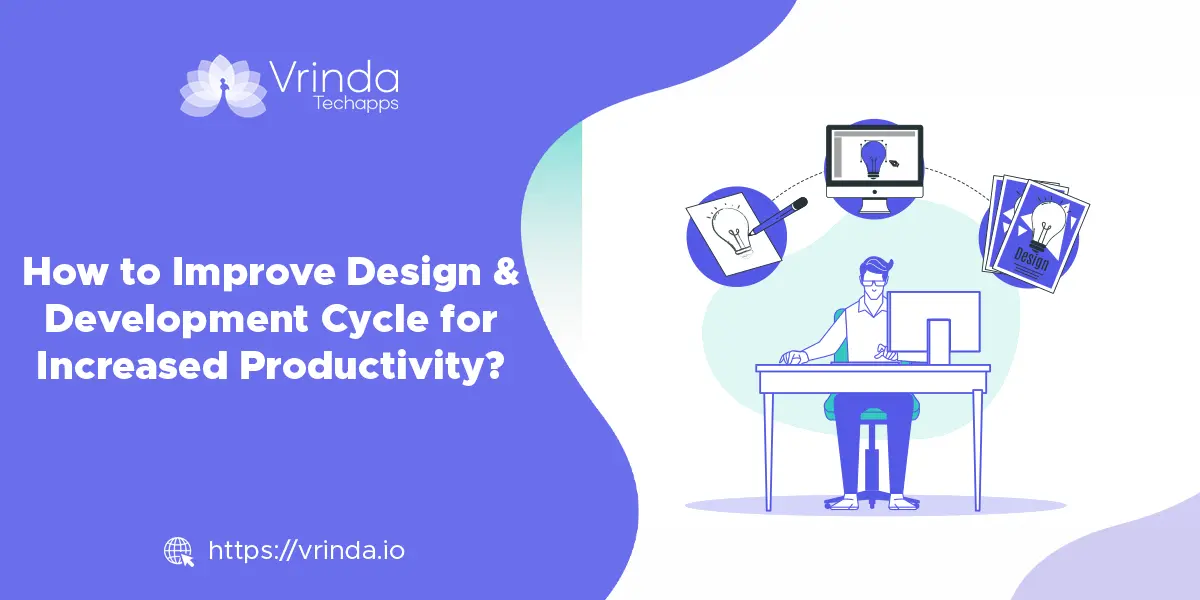
The design process is a highly selective and creative endeavor. It involves exploring different approaches and engaging in thoughtful analysis to find the most suitable solution. Interaction design, in particular, is subjective and experiential, as it involves making decisions, reflecting, and exercising judgment. As designers navigate through this process, the complexity of the design increases, requiring careful thought and consideration. In this blog, you will explore some areas of improvement to increase productivity in the design and development phase.
Rigorous brainstorming and planning stages are crossed before you initiate any project. Hardly does a project design development cycle navigate the original way.
When you on-board a project it is all exciting, designers are at their creative best and developers are at their innovative best. As the project progresses, all the excitement falls off the wagon. A slight improvement in the Design-Development cycle could keep the creative and innovative juices flowing until the delivery.
However, there are a few ideas that make these steps easier. Here are a few tips to help you set up the right environment to cope with this ‘creative chaos’.
Designers and developers must work in complete unison at this stage. By sitting together, stakeholders and designers can gather a comprehensive understanding of the project requirements. This collaborative approach ensures that all parties involved have a shared vision and can align their expectations. It allows for effective communication, clarification of goals, and the identification of potential challenges or opportunities. By working together, the design process can be more efficient and result in a better outcome.
While the designs ensure business needs and problems are addressed, the development team will offer insight into the timelines, technology selection, and cost incurred during the development. This is vital so that you do not have to go back and forth with the client on these terms.
Designing is a crucial step and is finalized only after a lot of hard work. Endless meetings and discussions between the designers and developers. You sure would have been in this situation.
When we see the developers trying to change designs just to make development simpler, the never-ending battle starts and the project goes into an analysis paralysis mode. Defining clear work boundaries ensures only constructive feedback is propagated and worked upon.
It is crucial to establish clear communication with the team that any design changes should be approved by the client. This ensures that any modifications align with the client’s vision and objectives.
If the client proposes design changes that could significantly impact development efforts and require extensive code modifications, it is important to raise concerns and highlight potential risks. By doing so, you can protect the development effort and avoid unnecessary setbacks or wasted resources.
It is important to avoid overburdening developers and designers with too many projects simultaneously. This can have a negative impact on productivity and hinder their ability to think innovatively and creatively.
It is recommended to allocate dedicated hours for each project, allowing team members to focus their attention and expertise on specific tasks. This approach promotes efficiency, enhances the quality of work, and allows for better project management and delivery.
Early on you must identify the timelines and finances. The team must be aware of the budget they need to stick to and the timelines they need to adhere to. If the ground rules are not set, not even the best project manager will know when the project fell off the wagon of productivity.
It is important to strike a balance between staying informed about project progress and allowing the team to work autonomously and develop their productivity. Constantly checking the project status every hour or day can be counterproductive and hinder the team’s ability to focus on their tasks. Instead, schedule regular checkpoint meetings to review progress, address any challenges, and ensure alignment with project goals. This approach allows the team to have a sense of autonomy while maintaining open communication and accountability.
There is no defined measuring rod for how well a resource is doing. In the design-development cycle, a balance needs to be maintained and that can be done only when individual contributor performance is monitored and improved upon.
At Vrinda Techapps, we strive to keep these two phases of development a lot balanced and synchronized as it helps us increase the overall productivity of our staff while working on a project. Articulating the objectives of the project in the early stages and propagating the same among the developers and designers ensures that productivity remains upbeat. You may come across many decision points and must try to stick to the fine balance between the two elements of the project to maintain the sanctity especially when you are close to the product delivery deadline.
© 2025 Vrinda Techapps India Pvt. Ltd. All Rights Reserved